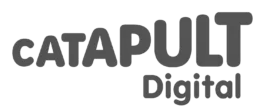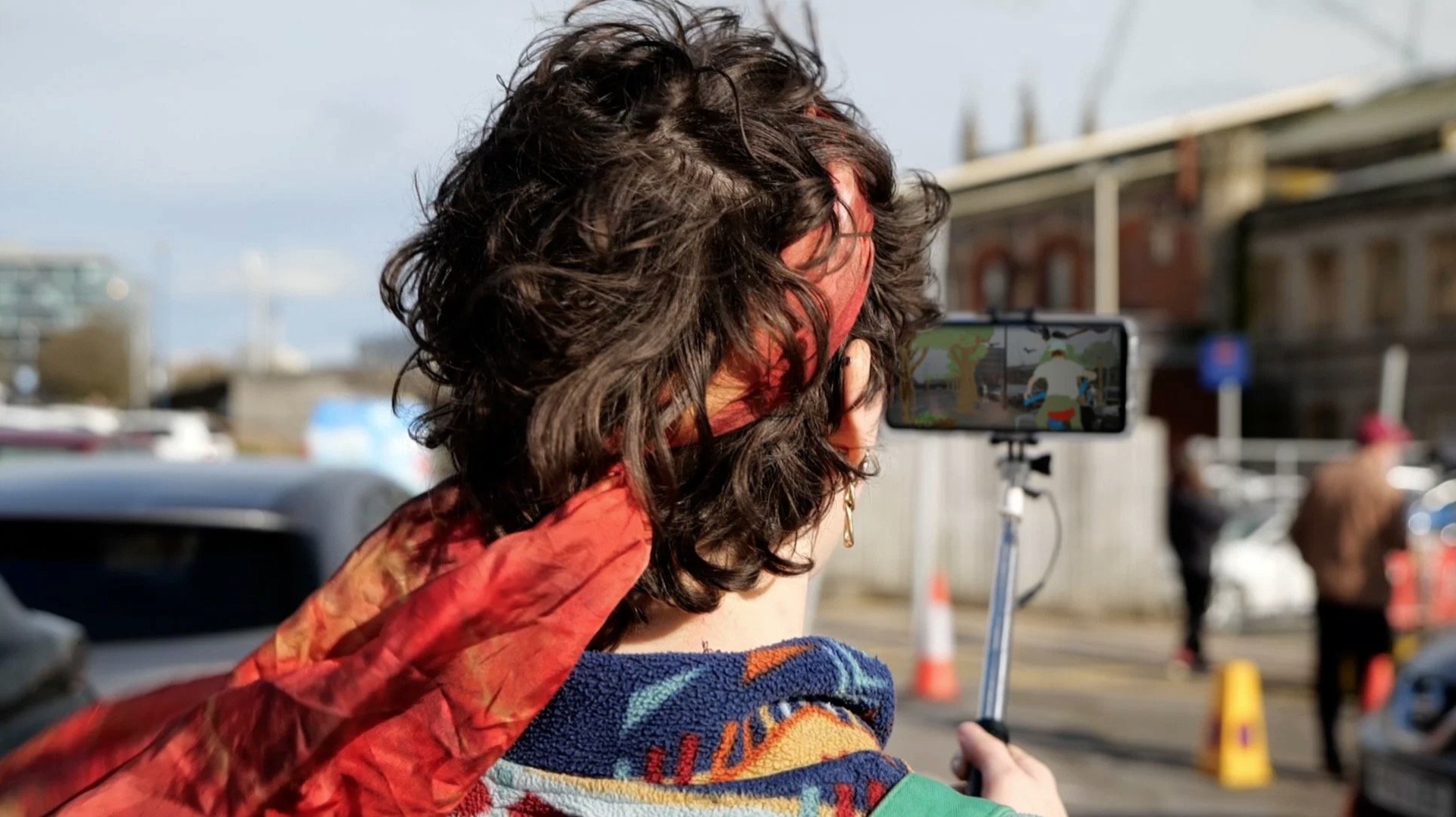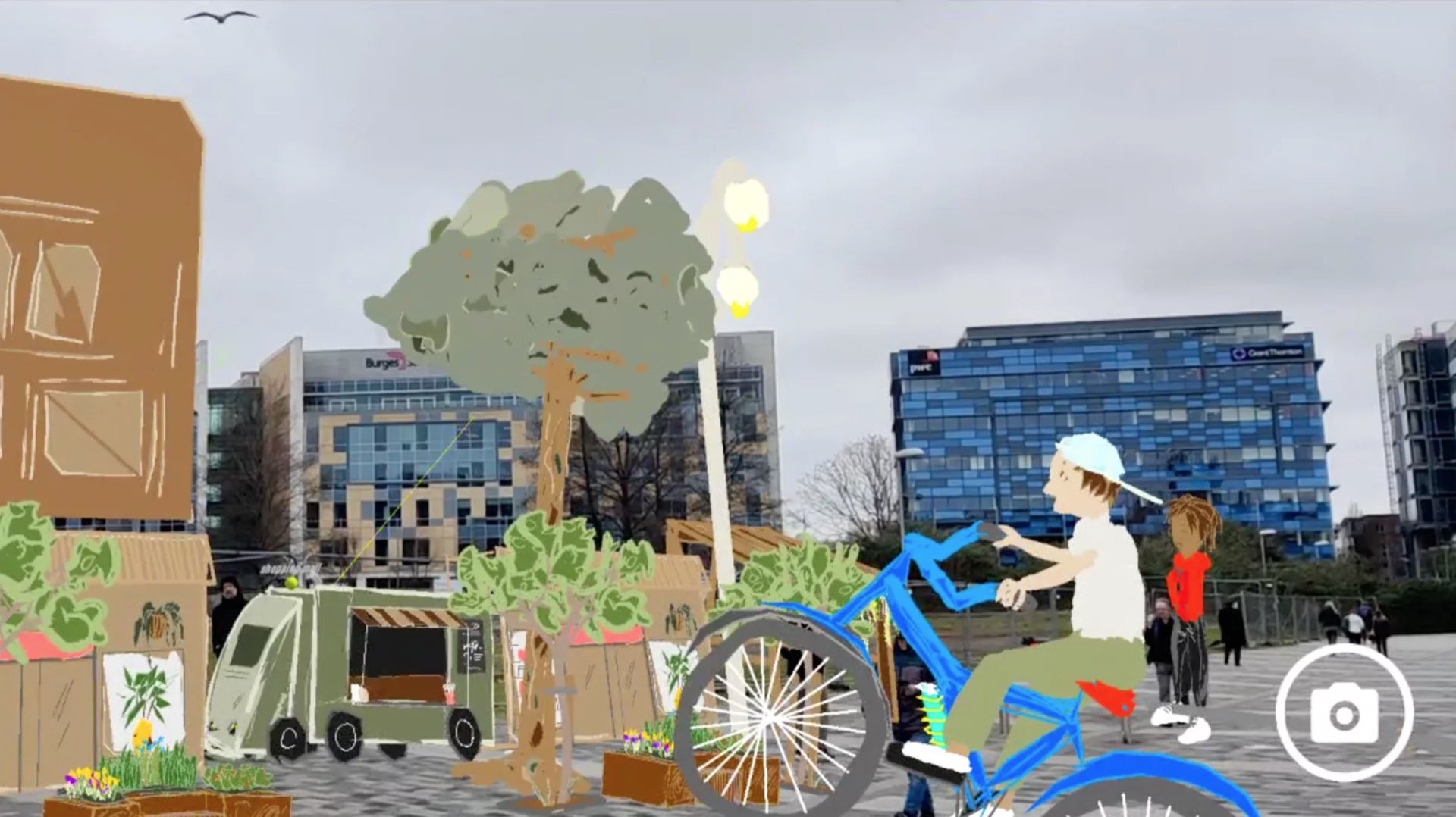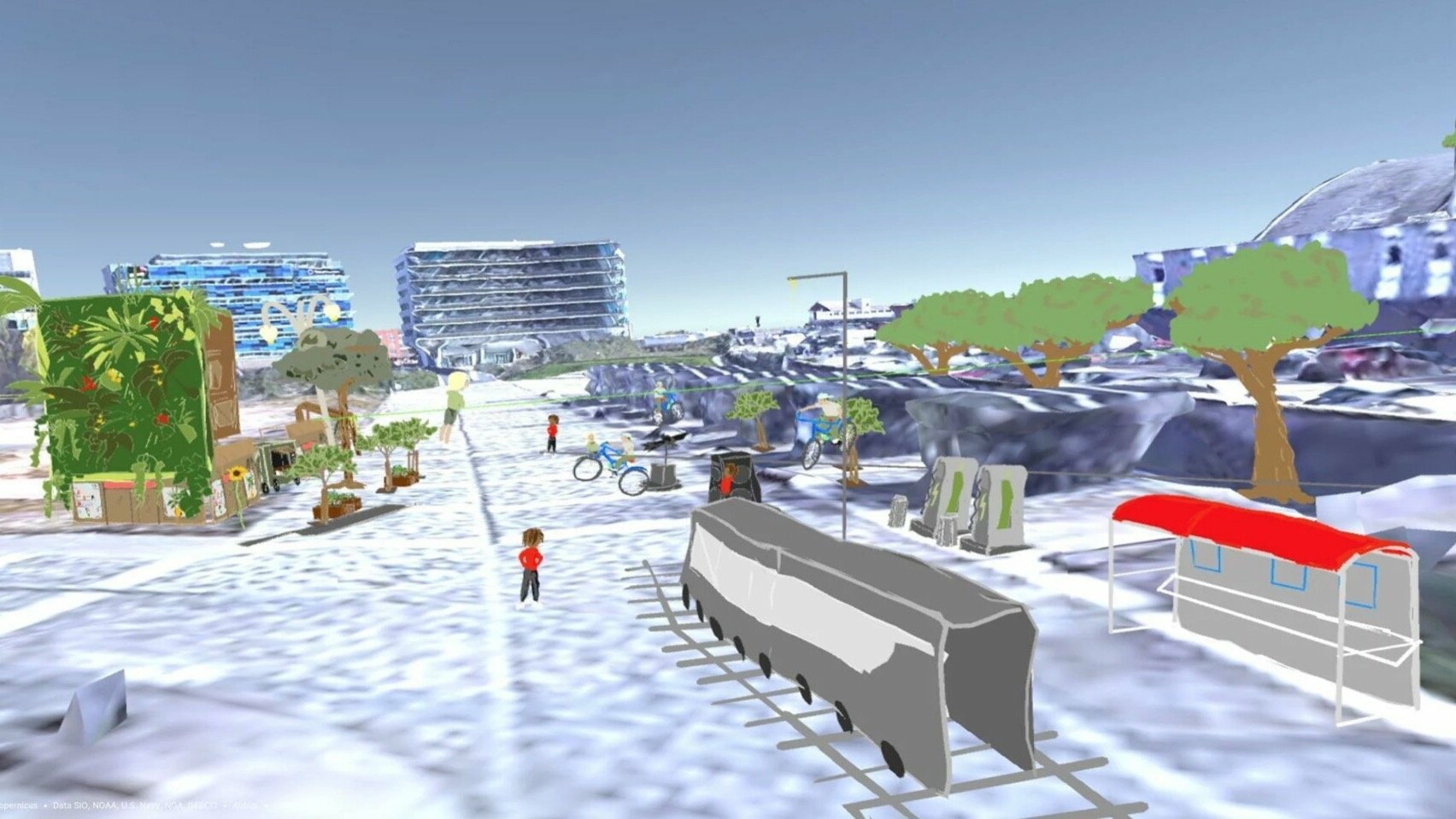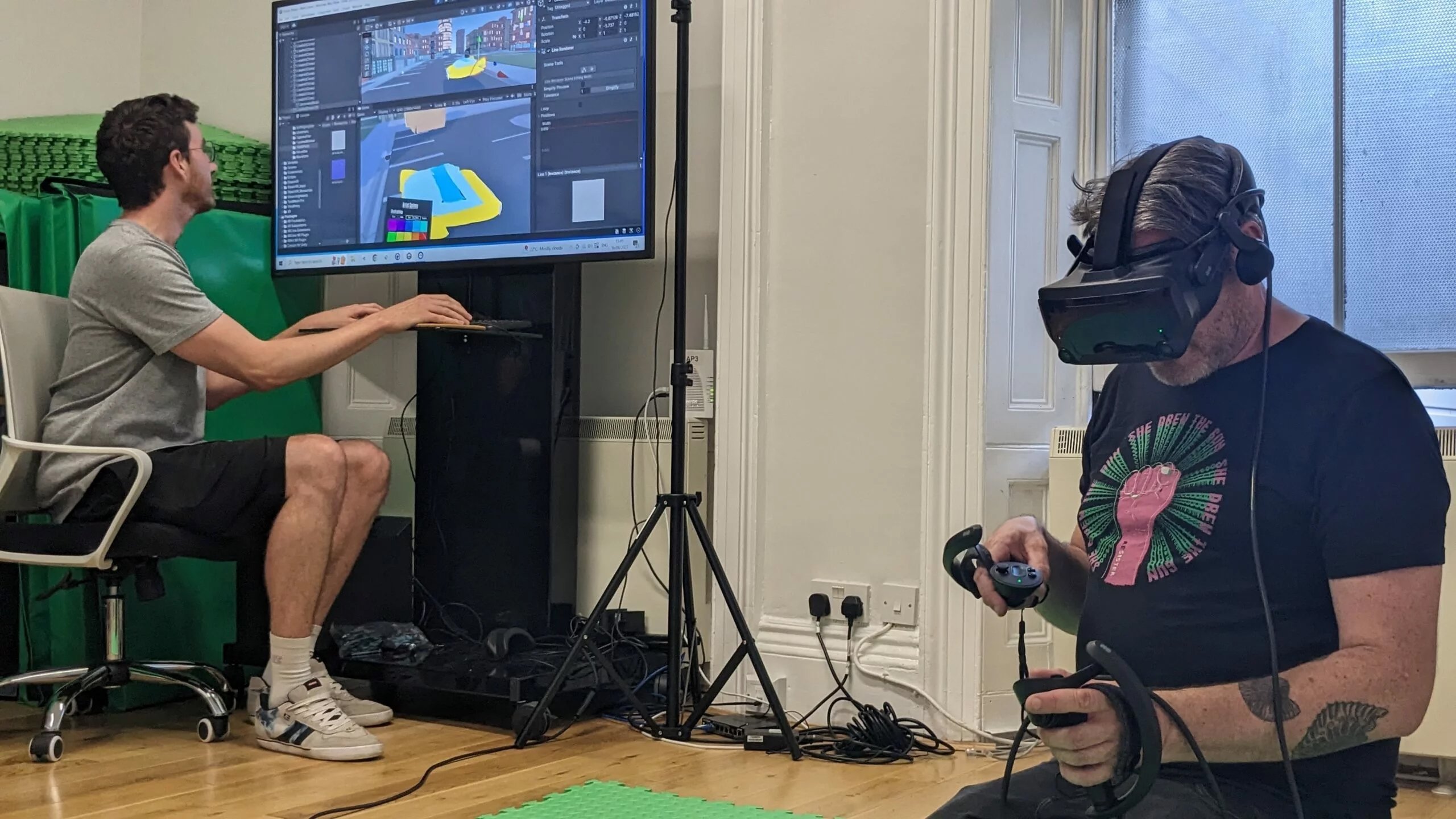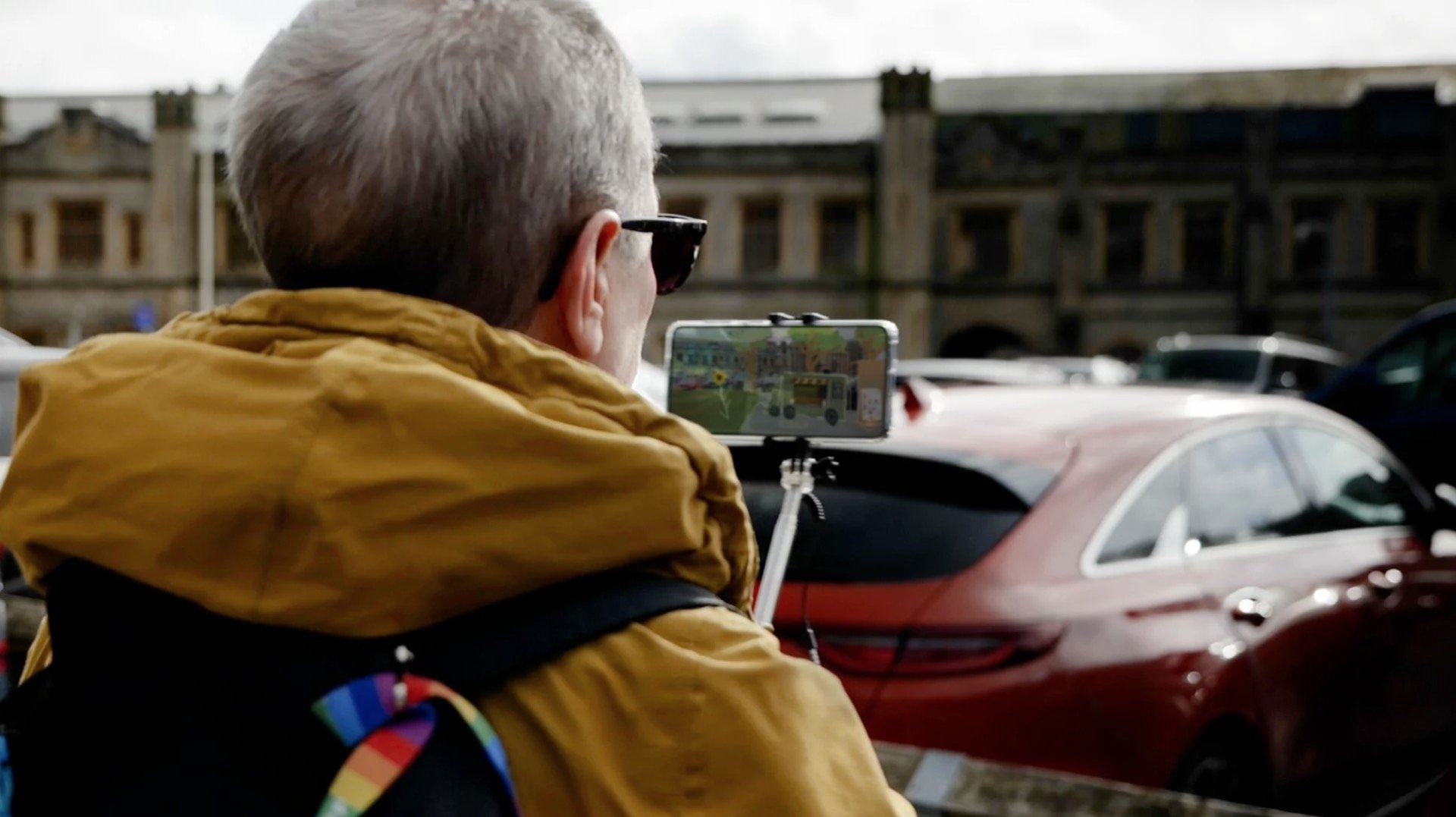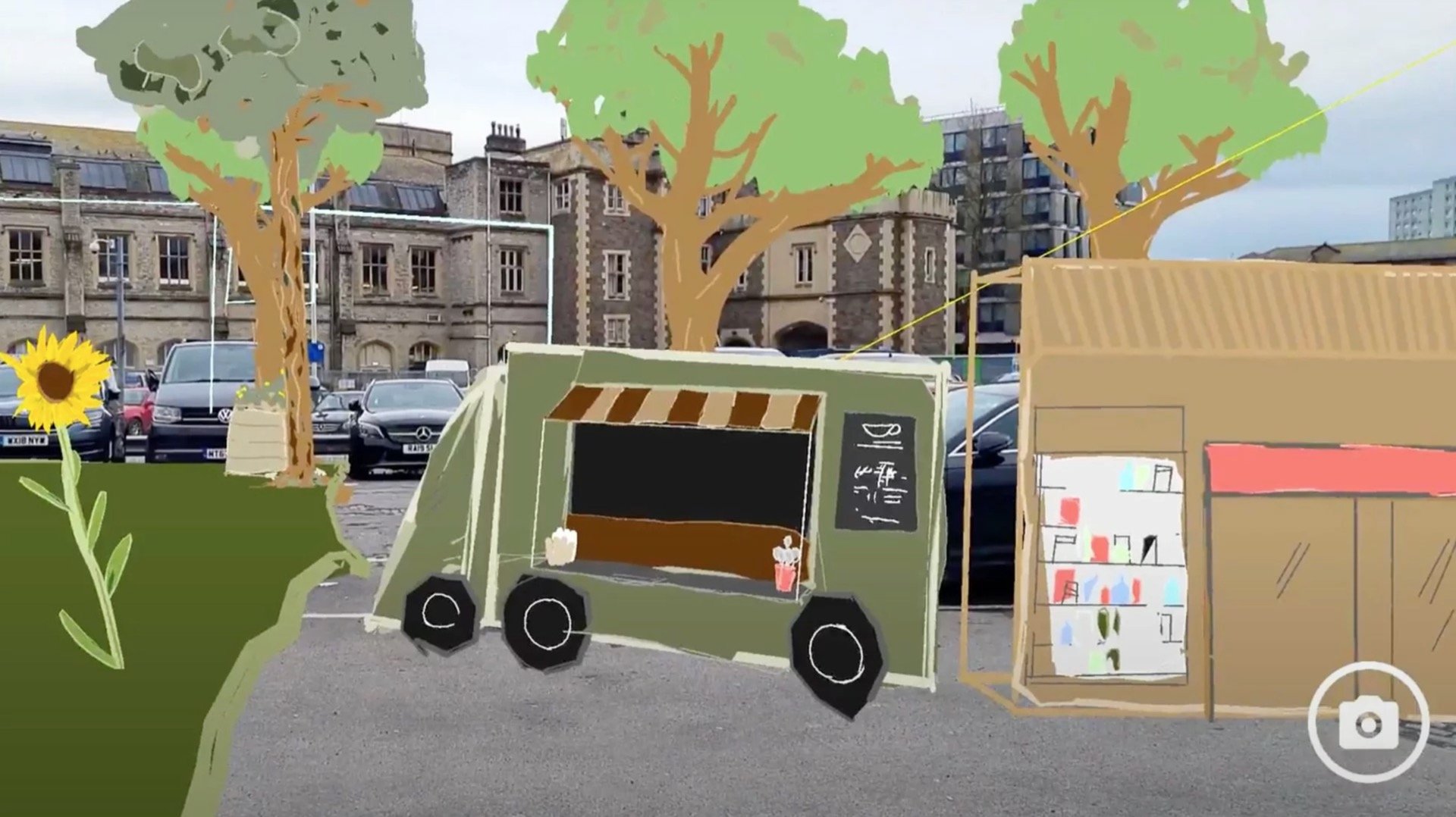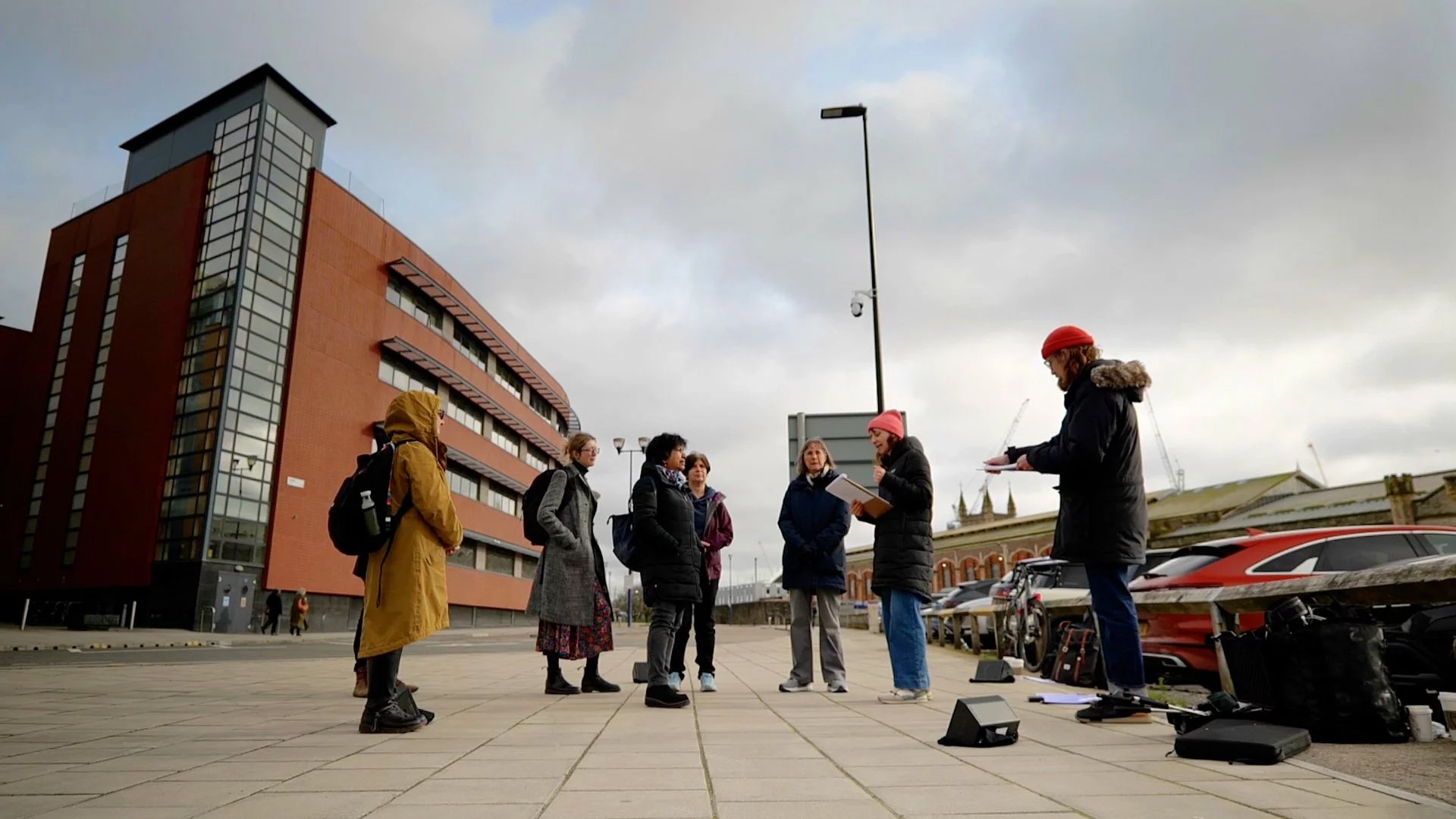Urban planning reimagined through collaborative AR drawing technology
Future Places Toolkit
Led by Zubr and Uninvited Guests, the Future Places Toolkit (FPT) is a groundbreaking technical project which revolutionises urban planning by integrating augmented reality and virtual reality into community engagement. This innovative toolkit allows stakeholders to collaboratively envision and explore potential urban spaces in an immersive, interactive manner, transforming traditional planning consultations into a dynamic and transparent process.
The FPT facilitates real-time geospatial AR drawing sessions at proposed development sites, enabling participants to visualise their ideas through live 3D sketching and immersive experiences. By merging cutting-edge technology with artistic practices, the FPT fosters deeper community involvement in 3D urban planning.
Partners
The Future Places Toolkit was developed in collaboration with Digital Catapult as part of the MyWorld Challenge Call.
The concept for drawing in 3D space, especially directly into the site context via Google Earth, was truly eye-opening and exciting.
Callum Swift, Stride Treglown
AR tools inspired by community participation
The FPT evolved from Uninvited Guests’ earlier project, ‘Billennium’, which was originally conceived as a site-specific theatre performance titled ‘Give Me Back My Broken Night’. In this early iteration, audiences were guided through a tour of their city’s future, using handheld projectors to visualise their ideas on a blank paper map. By 2018, Billenium had transitioned into an AR experience, allowing participants to see their imagined futures directly overlaid on their physical environment. However, technological limitations at the time meant that the visualisations were primarily in 2D and only aligned from specific viewpoints.
Theatre company, Uninvited Guests are known for integrating creative technology into performance, enhancing audience engagement. As Billennium toured, feedback from this project highlighted the potential of AR as a tool for real-world urban planning, combining innovative technology with audience collaboration. Inspiring the development of FPT, which leverages advanced AR and VR technologies for a more collaborative planning experience, Zubr were the perfect partners to take the Billennium project to new horizons with our rich portfolio of over 300 projects in the arts, heritage, and policy sectors.
Geospatial 3D sketching brings imagined cities to life
The FPT project began with community workshops, where participants used AR to visualise their ideas for local spaces, such as new playgrounds or community gardens. Artists also contributed by performing and sharing their visions for the future of these spaces, sparking further discussions. Community participants had the opportunity to suggest ideas for different features, such as shop fronts or street furniture, and watch as the professional artists brought their ideas to life.
The toolkit combines an intuitive AR app with a Unity Editor plugin, allowing a professional artist to create 3D visuals in real-time based on participant input. The toolkit’s VR sculpting tool ensures that all 3D objects maintain a ‘sketcherly’ appearance, promoting accessibility and ease of use. The tool’s integration with the Google Geospatial API enables the creation of AR layers on virtually any urban environment, providing a powerful platform for stakeholder engagement which far surpasses what is currently achievable in the architectural planning sector.
Urban planning with a difference
FPT’s augmented reality urban planning has significantly increased community engagement compared to traditional methods, inspiring collaborative solutions that might not have emerged otherwise. Participants left the experience feeling empowered, knowing their ideas were visualised and taken seriously.
Although some participants initially found the AR technology challenging, the supportive guidance from the Zubr team and the intuitive interface enabled users to adapt quickly. The project highlights the value of integrating technology with the arts to create inclusive urban planning processes.
What's next for Future Places Toolkit?
The Future Places Toolkit represents a significant advancement in urban design and planning of our public spaces. By merging AR arch vis with an interactive artist collaboration, the toolkit enables communities to play an active role in shaping their environments. As urban areas continue to evolve, tools like the Future Places Toolkit will be essential in ensuring that development is both innovative and inclusive, reflecting the diverse needs and aspirations of all community members.
The future of Future Places Toolkit is bright. The FPT team is focused on finalising the community AR app, which will project 3D models in real-time during consultations. Once the full system is developed, it will undergo extensive testing with a steering group and external partners. The ultimate goal is to deploy the Future Places Toolkit in real-world consultations, enhancing how communities and stakeholders collaborate on urban design projects.



